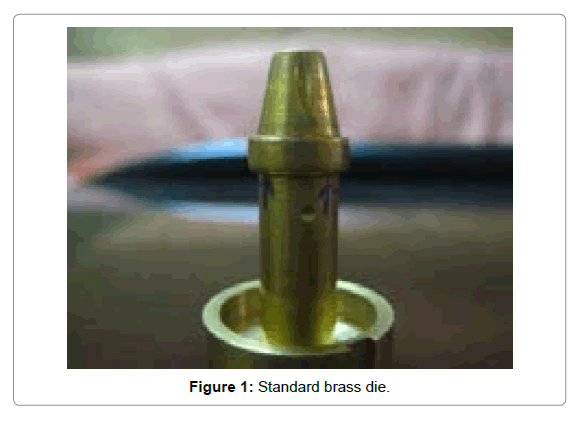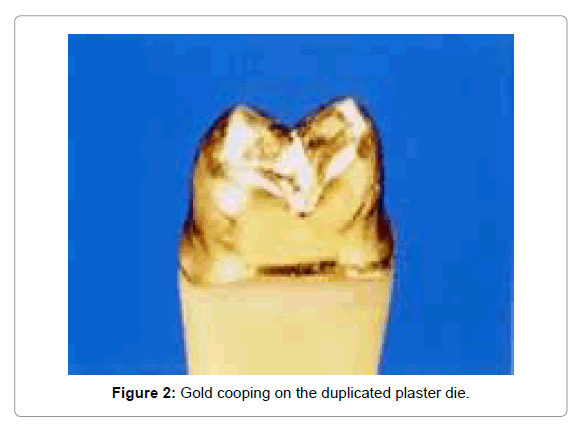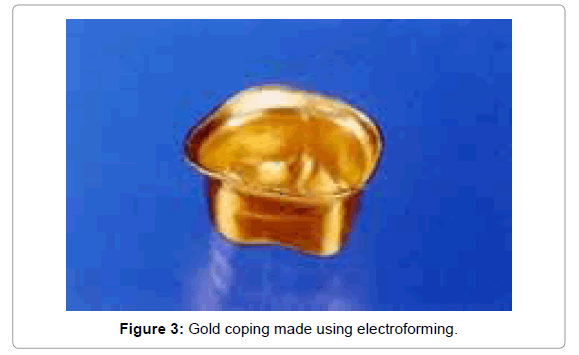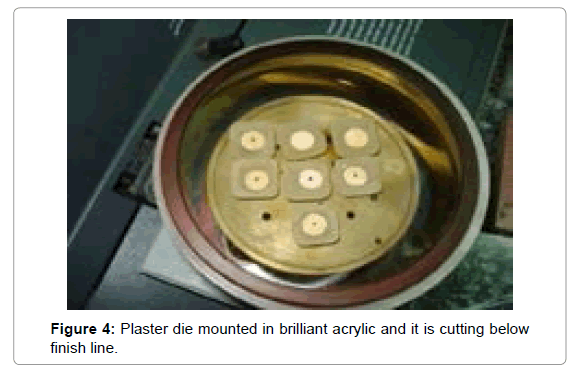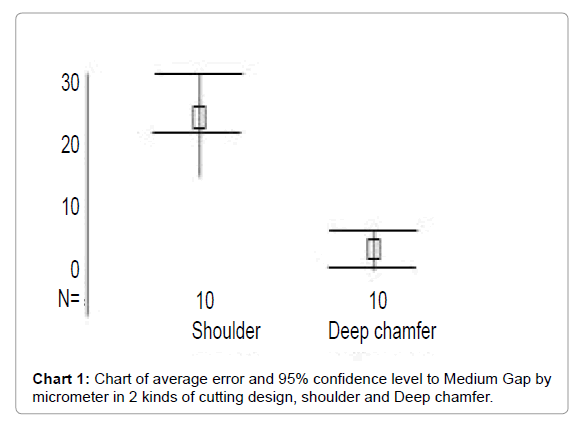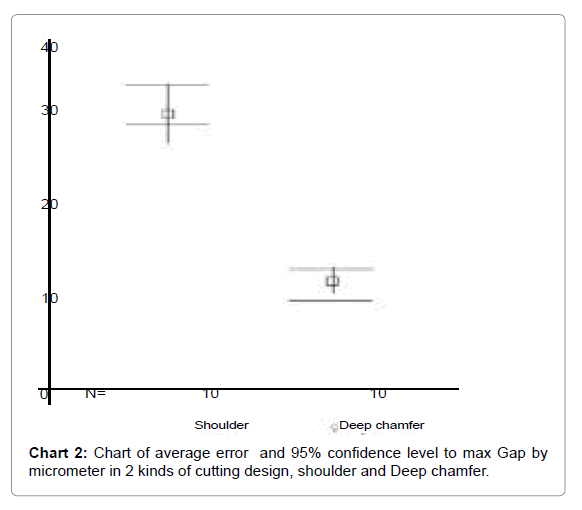Research Article Open Access
Effect of Shoulder and Deep Chamfer Finish Lines on Marginal Fitness of Electroformed P.F.M. Restorations
Nina Rahshenas1, Mohammad Hosein Kalantar Motamedi2*, Mohammad Sadegh Nazari3, Mohammad Hasan Salari4 and Bita Modaber4
1Department of Prosthodontics, Faculty of Dentistry, Tehran Azad University of Medical Sciences, Tehran, Iran
2Department of Oral and Maxillofacial Surgery, Trauma Research Center, Baqiyatallah University of Medical Sciences, Tehran, Iran
3Tehran Azad University of Dentistry, Tehran, Iran
4Department of Prosthodontics, Faculty of Dentistry, Tehran Azad University of Medical Sciences, Tehran, Iran
- Corresponding Author:
- Mohammad Hosein Kalantar Motamedi
Professor of Oral and Maxillofacial Surgery
Trauma Research Center
Baqiyatallah University of Medical Sciences, Tehran, Iran
Tel: 09121937154
E-mail: motamedical@yahoo.com
Received date: June 11, 2014; Accepted date: August 04, 2014; Published date: August 11, 2014
Citation: Rahshenas N, Motamedi MHK, Nazari MS, Salari MH (2014) Effect of Shoulder and Deep Chamfer Finish Lines on Marginal Fitness of Electroformed P.F.M. Restorations. J Interdiscipl Med Dent Sci 2:145. doi: 10.4172/2376-032X.1000145
Copyright: © 2014 Rahshenas N, et al. This is an open-access article distributed under the terms of the Creative Commons Attribution License, which permits unrestricted use, distribution, and reproduction in any medium, provided the original author and source are credited.
Visit for more related articles at JBR Journal of Interdisciplinary Medicine and Dental Science
Abstract
Objective: Comparison of the effect of shoulder with deep chamfer finish lines in P.F.M restorations using electroforming.
Method: This experimental study was performed on 20 samples that were randomly selected. Two cutting designs shoulder and deep chamfer were created on dies via a standard turning machine. The diameter rim was 8mm and the height was 6 mm and the depth of cutting edge in cervical area, was 1mm. Impressions were made from dies and 10 acetone dies were prepared for each group. Silver was used on the dies to the finish line and a copper wire was connected to the die by making a foramen 1 mm away from finish line. The collection of die and wire were attached to the head of electroforming machine and gold cooping was created with electroforming. The gap between the die and the crown was measured by electron microscope; data was recorded and evaluated by the t-test.
Results: According to statistical data, the average gap in shoulder lathe was 24.42 microns and in deep chamfer was 20.66 microns.
Conclusions: The deep chamfer design in electroforming method had a better marginal fitness in comparison to the shoulder design.
Keywords
Shoulder; Deep chamfer; Marginal fitness; Electroforming; Standard die
Introduction
Improper marginal adaptation between tooth and crown or in other words if there is a large gap between the tooth and crown finish line (FL), dental cements will dissolve and the tooth will be exposed to the oral environment [1]; flow of saliva under the crown will cause decay. On the other hand poor marginal adaptation causes plaque, gingivitis and gingival margin discoloration and in advanced cases increases pocket depth and losses attached gingival [2].
Electroforming may be used with any kind of FL for marginal adaptation in metal ceramic restorations; it was first introduced by Armstrong in 1961 [3,4].
In one study, the effect of FL in marginal adaptation of metal ceramic restorations with electroforming was evaluated and concluded that there were certain differences in marginal electroformed metal coopings. Another study showed that FL had no obvious effect on marginal adaptation [4]. Considering the apparent contradictions between studies, this study was done to evaluate the effects of two cutting designs, the shoulder and deep chamfer on marginal fitness.
Materials and Methods
This experimental study was performed on 20 samples in which two cutting designs, the shoulder and deep chamfer were evaluated as invitro with electroforming method. It was used from standard brass dies that had 8mm diameter and 6 mm height (Figure 1-6).
The depth of cutting in the cervical area was 1mm; half of these dies had shoulder design and half of them had deep chamfer design. The sampling was random and all confounding factors were removed. Cutting was created with a lathe machine from under the FL area on plaster mounted die; then the gap was assessed from 40 points in 4 areas.
Results
This research was evaluated by one sample Kolmogrov Smirnov test in both groups. the average and maximum gap from normal distribution was confirmed ( P <0.05) ; comparison between averages of gap in 40 points and maximums of gap in 40 points in 2 types of cutting design wass done , t-test was used for data with supposition of unequal variances and considering first statistics error (Table 1) (Chart 1-2).
| Group | number | Mean | Standard deviation | Error mean |
|---|---|---|---|---|
| Average gap Shoulder | 10 | 24.4244 | 3.62926 | 1.14767 |
| Deep chamfer | 10 | 20.6639 | 1.49505 | 0.47278 |
| Max average gap Shoulder | 10 | 30.4100 | 4.13022 | 1.30609 |
| Deep chamfer | 10 | 24.5600 | 1.40174 | 0.44327 |
Table 1: Mean and standard deviation of gap with separating of Shoulder and Deep chamfer groups.
Discussion
This study showed that the average gap in the deep chamfer cutting plane compared with shoulder design via electroforming method is very low and is ideal in clinical conditions. Results of this study is similar to a research in 2006 by Such in who concluded that marginal adaptation of metal coping produced by electroforming is better than cast porcelain [5]. In another study in 2003, Zasschi conducted to review adaptation of metal– ceramic restorations showed that coated metal–ceramic produced using electroforming had better adaptation than conventional metal– ceramic restorations similar to our recent results [6]. Shillingberg stated that by adding a bevel to existing shoulder can create better marginal fitness than shoulder FL alone (similar to our research) [7].
However, in another study in 1382 Jannati compared shoulder FL with bevel FL and sloping shoulder FL on cast coated marginal fitness and concluded that the marginal fit is similar in both groups but sloping shoulder FL is more suitable for anterior teeth because of its biological advantages and esthetics.
Conclusion
From the view of marginal fitness, in metal– ceramic restorations, deep chamfer design had significantly less gap than shoulder design and results showed that the gap in deep chamfer design in metal-ceramic restorations using the electroforming method is very low. Thus, use of the deep chamfer design and electroforming for metal ceramic restorations from the point of marginal fitness is one of the most important factors for long- term success of restorations.
References
- Jacobs MS, Windeler AS (1997) An investigation of dental luting cement solubility as a function of the marginal gap. J prosthet dent 65: 439-442.
- King NM (2000) Learns pilot study of Marginal adaptation and durance Morphology of glass cement Quintessence. 27: 497-501.
- JakobWirz, Andreas Hoffmann (2000) Electroforming in restorative dentistry. Quintessence Publishing Company.
- Shiratsuchi H, Komine F, Kakehashi Y, Matsumura H (2006) Influence of finish line design on marginal adaptation of electroformed metal-ceramic crowns. J Prosthet Dent 95: 237-242.
- Jahangiri L, Wahlers C, Hittelman E, Matheson P (2005) Assessment of sensitivity and specificity of clinical evaluation of cast restoration marginal accuracy compared to stereomicroscopy. J Prosthet Dent 93: 138-142.
- Yoko Y, Hidekazu T, Makoto S, Naohiko I (2003) Fit of electroformed porcelain-fused-to-metal crown on implant abutment. KokubyoGakkaiZasshi 70: 175-181.
- Shillingburg H, Whitsett J (2002) Fundamental of fixed prosthodontics.
Relevant Topics
- Cementogenesis
- Coronal Fractures
- Dental Debonding
- Dental Fear
- Dental Implant
- Dental Malocclusion
- Dental Pulp Capping
- Dental Radiography
- Dental Science
- Dental Surgery
- Dental Trauma
- Dentistry
- Emergency Dental Care
- Forensic Dentistry
- Laser Dentistry
- Leukoplakia
- Occlusion
- Oral Cancer
- Oral Precancer
- Osseointegration
- Pulpotomy
- Tooth Replantation
Recommended Journals
Article Tools
Article Usage
- Total views: 16902
- [From(publication date):
October-2014 - Aug 17, 2025] - Breakdown by view type
- HTML page views : 12088
- PDF downloads : 4814

